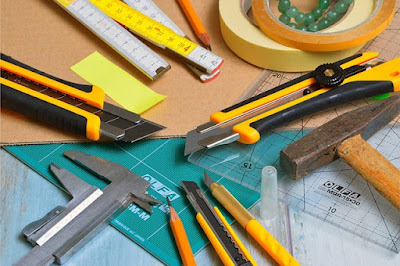Master Woodworking: A Beginner’s Guide to Getting Started
New to Woodworking? Start Building with Confidence — No Experience Needed!
Woodworking can feel overwhelming when you're just starting out — all those tools, techniques, and blueprints can easily scare off a beginner. But here's the truth: with the right guidance and beginner-friendly plans, anyone can start building beautiful, functional pieces right away. Whether you're dreaming of crafting furniture, décor, or gifts, this guide will help you take the first step with confidence.
Why Woodworking Feels Overwhelming (And How to Fix That)
Most beginners get stuck before they even start. Why?
-
Too many tool choices
-
Complex project instructions
-
Fear of making costly mistakes
How to Fix It:
-
Start with plans designed for beginners
-
Focus on just a few essential tools
-
Choose easy projects that build your skills step by step
What Are Woodworking Plans for Beginners?
Beginner woodworking plans are designed with simplicity and clarity in mind. They:
-
Require minimal tools
-
Include clear diagrams and measurements
-
Avoid advanced joinery or complicated techniques
-
Focus on skill-building
Think of them as your on-ramp into the woodworking world.
5 Best Starter Projects (And What They Teach You)
These five beginner-friendly projects not only help you practice essential skills but also teach you the fundamentals of woodworking:
-
Birdhouse
Skills: Measuring, cutting, basic assembly -
Wall Shelf
Skills: Mounting, leveling, sanding -
Toolbox or Caddy
Skills: Joinery, handles, finishes -
Step Stool
Skills: Weight-bearing structure, angles, sanding -
Planter Box
Skills: Outdoor finishes, box construction
👉 Ready to Start Building? Download Beginners Woodworking Plans and Build This Weekend!
Tools You Actually Need (Skip the Fancy Stuff)
Don't break the bank. Start with these essentials:
-
Power drill + bits
-
Circular saw or hand saw
-
Clamps (2–4 minimum)
-
Measuring tape
-
Carpenter's square
-
Sandpaper or sanding block
These tools will cover 90% of beginner projects.
How to Read a Woodworking Plan Without Getting Lost
A woodworking plan usually includes:
-
Materials list
-
Tool requirements
-
Cut list
-
Step-by-step instructions
-
Assembly diagrams
Tips for reading plans:
-
Highlight each step as you go
-
Double-check measurements
-
Lay out your materials beforehand
Free Beginner Plan: Build a Simple Wall Shelf (Lead Magnet)
Want a project you can finish in a single afternoon? Download our free beginner plan for a sleek wall shelf:
-
Minimal tools required
-
Step-by-step instructions
-
Visual diagrams included
👉 Download the Free Wall Shelf Plan Now!
Where to Get Good Beginner Plans (Free & Paid)
Top sources for beginner plans:
-
Ted’s Woodworking – Over 16,000 plans
-
Ana White – Free modern furniture plans
-
Instructables – Community-submitted builds
-
Woodsmith Plans – Clean, pro-level diagrams
👉 Want More Plans? Compare the top sources for beginner woodworking plans
Final Tips for Getting Started
-
Start small — Confidence builds quickly with early wins.
-
Always measure twice, cut once.
-
Don’t be afraid to make mistakes — it’s part of learning.
-
Use soft woods like pine for your first few projects.
And remember — everyone starts somewhere. What matters is starting.
🛠️ Ready to Get Started?
Download your free beginner woodworking plans and start crafting your first project today.
Related Articles:
How to Build Stunning DIY Pallet Furniture (With Free Printable Plans)
Download Free Pallet Furniture Plans PDF – Creative DIY Ideas for Your Home
DIY Rustic Pallet Coffee Table – Step-by-Step Guide
Free Pallet Furniture Plans PDF: Download & Build Stunning DIY Projects Today







.jpeg)

.jpeg)
